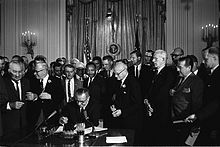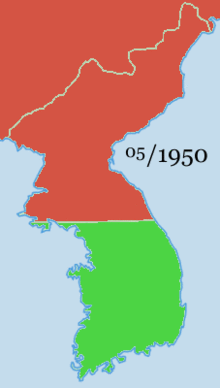 On this day in 1986, the U.S. Supreme Court rules in Bowers v. Hardwick that states can outlaw homosexual acts between consenting adults.
On this day in 1986, the U.S. Supreme Court rules in Bowers v. Hardwick that states can outlaw homosexual acts between consenting adults.
Bowers v. Hardwick, upheld the constitutionality of a Georgia sodomy law criminalizing oral and anal sex in private between consenting adults when applied to homosexuals. Seventeen years after Bowers v. Hardwick, the Supreme Court directly overruled the decision in Lawrence v. Texas (2003), and held that such laws are unconstitutional. In overruling Bowers v. Hardwick, the 2003 Court stated that “Bowers was not correct when it was decided, and it is not correct today.”
Concurrences and dissents
The short concurring opinion by Chief Justice Warren E. Burger emphasized historical negative attitudes toward homosexual sex, quoting Sir William Blackstone‘s characterization of sodomy as “a crime not fit to be named.” Burger concluded, “To hold that the act of homosexual sodomy is somehow protected as a fundamental right would be to cast aside millennia of moral teaching.”
Opponents of sodomy laws criticized Bowers not only for its result but also because of the Court’s dismissive treatment of the liberty and privacy interests of gay men and lesbians. A sharply worded dissenting opinion by Justice Harry Blackmun attacked the majority opinion as having an “almost obsessive focus on homosexual activity.” Justice Blackmun suggested that “(o)nly the most willful blindness could obscure the fact that sexual intimacy is ‘a sensitive, key relationship of human existence, central to family life, community welfare, and the development of human personality.'” (Ironically quoting from the opinion by Chief Justice Burger in Paris Adult Theatre I v. Slaton which held that obscene films are not constitutionally protected)
Blackmun revealed in a 1995 oral history with Harold Koh that his dissent in Bowers v. Hardwick was written primarily by openly gay Pam Karlan (then a law clerk for Blackmun, and now professor of law at Stanford Law School). Blackmun said of the dissent; “[K]arlan did a lot of very effective writing, and I owe a lot to her and her ability in getting that dissent out. She felt very strongly about it, and I think is correct in her approach to it. I think the dissent is correct.”
Lewis Powell was considered the deciding vote during the case. He had initially voted to strike down the law but changed his mind after a few days. In a concurring opinion, Powell voiced doubts about the compatibility of Georgia’s law with the Eighth Amendment as it related to the prison sentence for conviction, but joined the majority opinion upholding the law against a substantive due process attack. It has been argued that Powell’s decision to uphold the law was influenced by the fact that he believed he had never known any homosexuals, unaware that one of his own law clerks was gay. In 1990, three years after retiring from the Court, Powell told a group of New York University law students that he considered his opinion in Bowers was an error. “I do think it was inconsistent in a general way with Roe. When I had the opportunity to reread the opinions a few months later I thought the dissent had the better of the arguments.” However, Powell believed that the case was one of little importance and spent only thirty minutes thinking about it.
Aftermath
Bowers was decided at a time when the court’s privacy jurisprudence, and in particular the right to abortion recognized in Roe v. Wade, 410 U.S. 113 (1973), had come under heavy criticism and was in doubt. In this historical context, Bowers signaled a reluctance by the then-members of the Court to recognize a general constitutional right to privacy or to extend such a right further than they already had.
State sodomy laws were seldom enforced against private consensual conduct in the decades following the decision, but the Bowers decision was frequently cited in opposition to gay rights programs. The Georgia law upheld in Bowers forbade oral sex and anal sex whether engaged in by people of the same sex or different sexes, but Justice White’s decision was restricted to homosexual sex. “The only claim properly before the Court, therefore, is Hardwick’s challenge to the Georgia statute as applied to consensual homosexual sodomy. We express no opinion on the constitutionality of the Georgia statute as applied to other acts of sodomy.”
In the years after Bowers was decided, several state legislatures repealed their sodomy laws. In addition, a number of state courts invalidated sodomy laws under privacy or other provisions of their state constitutions. The same sodomy law that was upheld in Bowers was struck down by the Georgia Supreme Court under the Georgia state constitution in the case of Powell v. State, 270 Ga. 327 (1998).
The remaining state sodomy laws in the U.S. were invalidated, insofar as they applied to private consensual conduct among adults, in the Supreme Court case of Lawrence v. Texas 539 U.S. 558 (2003). Justice Anthony Kennedy wrote the majority opinion in Lawrence, ruling that Texas’ state sodomy law was unconstitutional under the Fourteenth Amendment’s due process clause (adult consensual sexual intimacy in ones’ home is a vital interest in liberty and privacy protected by the Due Process Clause). Lawrence explicitly overturned Bowers, with Kennedy writing “Bowers was not correct when it was decided, and it is not correct today. It ought not to remain binding precedent. Bowers v. Hardwick should be and now is overruled.”




 On this day in 1986, the
On this day in 1986, the 

 On this day in 1919,
On this day in 1919, 